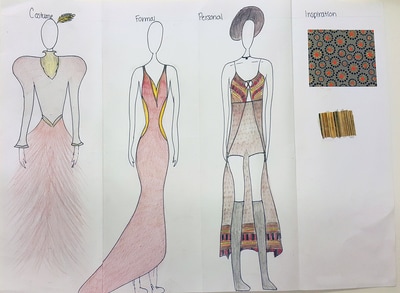
Both the head and neck should be sized to vertically fill the row. Start by sketching, in pencil, the head in the top row, and the neck in the next. Step #2: Sketch Head and Neck Sketch the figure’s head and neck. Some parts of the body should fit into one of these sections, while others will spread over several. The rows represent the proportions of the figure you’re going to draw: 1/10. On a piece of paper, using a ruler or other object with a straight edge, draw in pencil ten evenly spaced rows. This article was amended on 19 February 2023 to correct a misspelling of Giorgio Vasari’s first name, which occurred during editing.Step #1: Draw 10 Evenly Spaced Rows Draw evenly spaced rows. Michelangelo’s concern was dynamic expression, not anatomical fidelity.” Noting that Michelangelo represents the bones of the back in a similar way elsewhere, he adds: “This assessment by the surgeon Francis Wells substantiates Michelangelo’s lack of concern for skeletal and muscular accuracy… As Vasari remarked in a famous passage: ‘he used to make his figures with nine, 10, or 12 heads, seeking only to create, by placing them all together, a certain harmonious grace in the whole which Nature does not produce, declaring that it was necessary to have a good eye for measurement rather than a steady hand’. In the Burlington, he acknowledges that, despite Michelangelo’s supreme knowledge of male anatomy, there are weaknesses in this drawing, including a near-impossible pose, a left thigh that is too long and a “block-like” depiction of vertebrae. Joannides paid tribute to the drawing’s owner for having first realised that it related to a figure within the “turbulence of struggling men” in the Brazen Serpent fresco. Its lower left shows the handwritten initials ‘JCR’, relating to Sir John Charles Robinson, a leading connoisseur of Michelangelo drawings, and its backing sheet has the stamp of Chambers Hall, a collector who donated many drawings to the nation. The drawing bears 19th-century collectors’ marks and inscriptions. We use Google reCaptcha to protect our website and the Google Privacy Policy and Terms of Service apply. For more information see our Privacy Policy. Privacy Notice: Newsletters may contain info about charities, online ads, and content funded by outside parties.

In the Burlington, he writes: “Michelangelo reminded himself of the figure’s final orientation by a sequence of short lines at the right edge, which mark the vertical when the page is rotated.” Once examined, it was obvious that the drawing is preparatory for this figure.” Joannides said. Put the two images side by side and there it is.

It’s intended to be seen with the drawing rotated 90 degrees clockwise. “Looking at the drawing, one would assume that the figure was intended to be seen horizontally.


The male figure in the newly discovered drawing is shown from another angle in the final painted version. Giorgio Vasari, the Italian renaissance master best known for his 1550 book The Lives of the Most Excellent Painters, Sculptors and Architects, wrote of Michelangelo: “Just before his death, he burned a large number of his own drawings, sketches and cartoons to prevent anyone from seeing the labours he endured or the ways he tested his genius, for fear that he might seem less than perfect.” It is one of relatively few developed drawings for the Sistine ceiling to have survived. But this is a drawing by Michelangelo for one of the greatest masterpieces of western art.” He told the Observer: “For an artist of Michelangelo’s greatness, and greatness as a draughtsman, any new discovery has some level of excitement. The attribution has been supported by Paul Joannides, emeritus professor of art history at Cambridge university and one of the world’s leading authorities on Michelangelo, who will publish it in the scholarly Burlington Magazine.


 0 kommentar(er)
0 kommentar(er)
